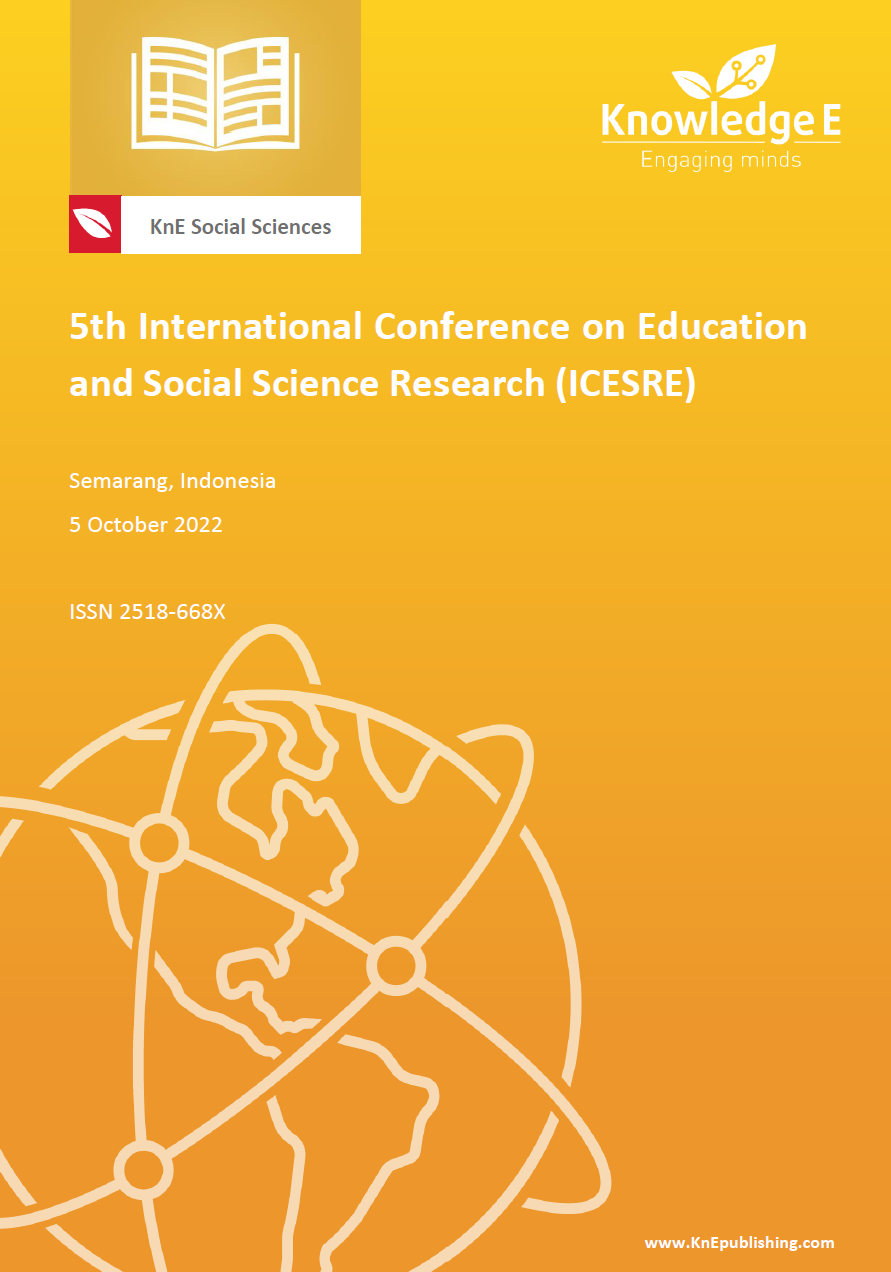Gumatere Dance from North Maluku as a Source of Physics Learning: Analysis of Ethnophysical Studies
DOI:
https://doi.org/10.18502/kss.v7i19.12454Abstract
Physics is widely implemented in Maluku’s regional dances. One of these dances is the north Maluku gumatere dance. This study aimed to analyze the relationship between the concept of physical matter and gumatere dance. In the dance, there are various physical concepts, namely, momentum, impulse, GLB, sound, and elasticity. The research method used was a literature review with descriptive qualitative analysis. The data obtained were then analyzed, verified, reduced, constructed to scientific knowledge and interpreted to the concepts of physics. The results showed that the Saureka-reka dance can be used as a special physics learning resource in class X and XI SMA /MA. Regional dances can be implemented into physics lessons so that students can understand the concepts of physics well.
Keywords: gumatere dance, ethnophysical, source of physics learning.
References
[2] Alaslan A. Analisis nilai-nilai budaya duan lolat berbasis kearifan lokal pada masyarakat tanimbar di kabupaten maluku tenggara barat. 2021.
[3] Escobar A. Culture sits in places: Reflections on globalism and subaltern strategies of localization. Political Geography. 2001;20:139–174.
[4] Pradana DA, Mahfud M, Hermawan C, Susanti HD. Nasionalism: Character education orientation in learning development. Budapest International Research and Critics Institute-Journal. 2020;3:4026–4034.
[5] Zuhaeriah Z, Ali M, Yusra Y. The role of Islamic education teachers competency in improving the quality of education. Journal of Contemporary Islamic Education. 2020;2:108–130.
[6] Masfufah FH, Ellianawati E. Peningkatan literasi sains siswa melalui pendekatan Contextual Teaching and Learning (CTL) bermuatan Etnosains. UPEJ Unnes Physics Education Journal. 2020;9:129–138.
[7] Parmin P, Sajidan S, Ashadi A, Sutikno S, Fibriana F. Science integrated learning model to enhance the scientific work independence of student teacher in indigenous knowledge transformation. Jurnal Pendidikan IPA Indonesia. 2017;6:365–372.
[8] Rist S, Dahdouh-Guebas F. Ethnosciences—-A step towards the integration of scientific and indigenous forms of knowledge in the management of natural resources for the future. Environment, Development and Sustainability. 2006;8:467– 493.
[9] Astuti IAD, Bhakti YB. Kajian etnofisika pada tari piring sebagai media pembelajaran fisika. SINASIS (Seminar Nasional Sains). 2021.
[10] Dewi CA, Khery Y, Erna M. An ethnoscience study in chemistry learning to develop scientific literacy. Jurnal Pendidikan IPA Indonesia. 2019;8:279–287.
[11] Ibe E, Nwosu AA. Effects of Ethnoscience and traditional laboratory practical on science process skills acquisition of secondary school biology students in Nigeria. British Journal of Multidisciplinary and Advanced Studies. 2017;1:35–46.
[12] Marhayani D. Development of character education based on local wisdom in indegenous people Tengahan Sedangagung. Journal of Education for Teaching. 2016;1:66–70.
[13] Subali B, Sopyan A, Ellianawati E. Developing local wisdom based science learning design to establish positive character in elementary school. Jurnal Pendidikan Fisika dan Teknologi. 2015;11:1–7.
[14] Saragih S, Napitupulu EE, Fauzi A. Developing learning model based on local culture and instrument for mathematical higher order thinking ability. International Education Studies. 2017;10:114–122.
[15] Novitasari L, Agustina PA, Sukesti R, Nazri MF, Handhika J. Fisika, Etnosains, dan kearifan lokal dalam pembelajaran sains. Seminar Nasional Pendidikan Fisika III 2017. 2017. p. 81–88.
[16] Godwin-Jones R. Integrating intercultural competence into language learning through technology. Language Learning and Technology. 2013;17:1–11.
[17] Van Oers B. Learning mathematics as a meaningful activity. Theories of Mathematical Learning. Routledge; 2013. p. 103–126.
[18] Zhao Y. Preparing globally competent teachers: A new imperative for teacher education. Journal of Teacher Education. 2010;61:422–431.
[19] Cleveland M, Laroche M. Acculturaton to the global consumer culture: Scale development and research paradigm. Journal of Business Research. 2007;60:249– 259.
[20] Stromquist NP, Monkman K. Defining globalization and assessing its implications for knowledge and education, revisited. Globalization and Education: Integration and Contestation across Cultures. 2014;1:1–21.
[21] Munandar R, Ristanti CI, Busyairi A, Rokhmat J. Analisis potensi pembelajaran fisika berbasis etnosains untuk meningkatkan kecintaan budaya lokal masyarakat bima: pendidikan. Jurnal Penelitian dan Pembelajaran Fisika Indonesia. 2022;4.

